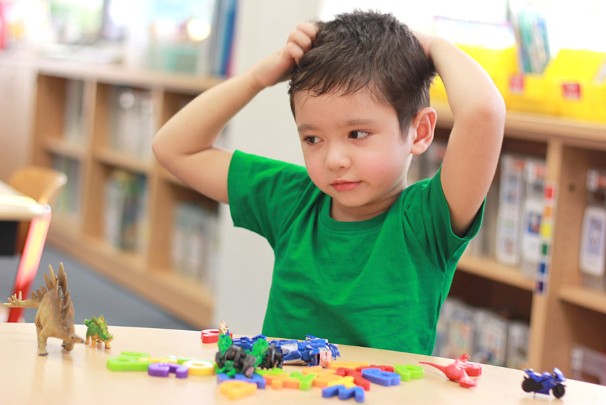St. Luke's Health joins CommonSpirit.org soon! Enjoy a seamless, patient-centered digital experience. Learn more

Your child comes home from school, and they can’t seem to stop scratching their head. Could it be lice? Learn more about these little bugs and how you can tell if you have a case of them.
Lice are small bugs that live on the head and feed on blood from your scalp. They live for about 28 days and have a three-part life cycle. They start off as a yellow egg, or a nit, which attaches to your hair and needs to be very close to your scalp to survive. Once hatched, the empty nit stays on the hair while the young louse enters the nymph stage. The nymphs are much smaller than an adult louse, which is the third stage of the life cycle. Once they become adults, the bugs can lay eggs, leading to a serious infestation if not properly treated. Younger, school-aged children are most at risk of an infestation, yet anyone can get them.
The characteristic symptom of lice is an itchy scalp, mostly behind the ears and the back of the neck. But you can have lice for a couple of weeks before your scalp begins to itch. To be proactive, you can check your child occasionally for lice to catch the bugs before they multiply and become a larger problem. In a bright room, part your child’s hair and look for yellow nits at the base of the hair. These can be mistaken for dandruff, but you can tell it’s a nit because it will be difficult to remove from the hair. Check the entire head.
There are several over-the-counter medications on the market which can help clear away lice. However, before you start treatment on yourself or your child, talk to your doctor to make sure the medicine won’t impact any conditions you might have or interact with any medications you currently take. It’s especially important to ask your doctor before handling the medication if you’re pregnant, breastfeeding, or applying it on a child younger than 2 years of age. Follow all instructions carefully, and get a physician’s confirmation before beginning another round of treatment. It’s best to wash any towels, sheets, and clothes the affected person used recently. Wash everything in hot water and dry with high heat to make sure none of the lice survive.
If lice become a problem among your family members, visit with a Baylor St. Luke’s Medical Group primary care physician or pediatrician. Our experienced team can help you determine your best plan to become bug-free.
Source:
Healthy Children | Head Lice: What Parents Need to Know
Looking for a doctor? Perform a quick search by name or browse by specialty.